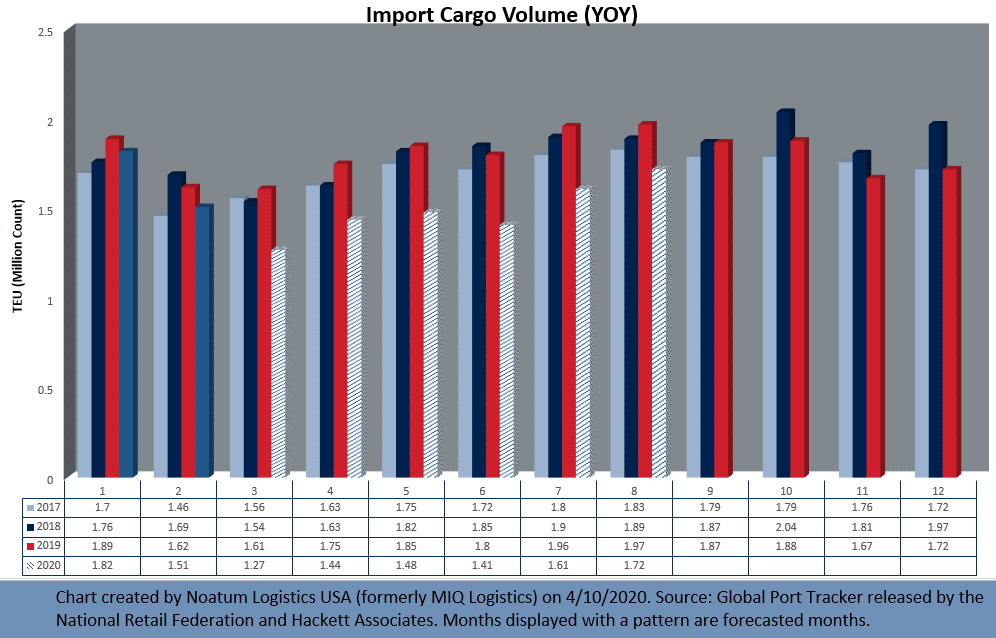Source: National Retail Federation Press Release – April 7, 2020
Estimates show that imports at major U.S. retail container ports dropped to their lowest level in five years in March, and imports are projected to remain significantly below normal levels through early summer as the coronavirus pandemic continues, according to the Global Port Tracker report released today by the National Retail Federation and Hackett Associates.

“Even as factories in China have begun to get back to work, we are seeing far fewer imports coming into the United States than previously expected,” NRF Vice President for Supply Chain and Customs Policy Jonathan Gold said. “Many stores are closed, and consumer demand has been impacted with millions of Americans out of work. However, there are still many essential items that are badly needed and because of store closures cargo may sit longer than usual and cause other supply chain impacts.”
“The COVID-19 pandemic is unraveling the economy nationally and globally as most of the world moves toward a lockdown that entails the closure of significant portions of both the service and manufacturing industries,” Hackett Associates Founder Ben Hackett said. “The largest drop is forecast for the first half of this year but with uncertainty about the length of the lockdown and extent of the pandemic, the second half may not be in better shape.”
U.S. ports covered by Global Port Tracker handled 1.51 million Twenty-Foot Equivalent Units in February, the latest month for which after-the-fact numbers are available. That was down 17 percent from January and down 6.8 percent year-over-year. A TEU is one 20-foot-long cargo container or its equivalent.
February numbers are normally lower than January because of annual factory shutdowns in China for Lunar New Year celebrations. But the shutdowns lasted longer than usual and continued into March because of the coronavirus outbreak. While actual numbers for March are not yet available, estimates show that imports plunged to 1.27 million TEU, down 21.3 percent year-over-year and the lowest level seen since 1.21 million TEU in February 2015 during a labor dispute that caused slowdowns at West Coast ports that winter.
April is forecast at 1.44 million TEU, down 17.6 percent year-over-year; May at 1.48 million TEU, down 20.1 percent; June at 1.41 million TEU, down 21.4 percent; July at 1.61 million TEU, down 18.2 percent, and August at 1.72 million TEU, down 12.5 percent.
Before the coronavirus began to have an effect on imports, February through May had been forecast at a total of 6.9 million TEU but is now expected to total 5.7 million TEU, a drop of 17.3 percent. As recently as last month, monthly numbers had been expected to hit the 2 million TEU mark beginning in May. The last time monthly totals fell below 1.5 million TEU was in February 2017.
The first half of 2020 is forecast to total 8.93 million TEU, down 15.1 percent from the same period last year. Before the extent of the pandemic was known, the first half of the year was forecast at 10.47 million TEU.
Imports during 2019 totaled 21.6 million TEU, a 0.8 percent decrease from 2018 amid the trade war with China but still the second-highest year on record.
Click here to access the National Retail Federation website for the entire press release.
